Last Updated on July 7, 2024 by Max
Introduction
When we think about key organs in animal reproduction, the prostate gland often comes to mind, especially when we talk about human health. Yet, this small gland’s role and evolution stretch way beyond humans, reaching into corners of the animal kingdom we rarely consider. In this blog post, we’ll dive into the anatomical and evolutionary journey of the prostate gland across different species. Plus, we’ll tackle the world of male and female prostate glands. Yes, you read that correctly. The existence of a female prostate, known as the Skene’s gland in humans, challenges our traditional views and sparks discussions on anatomy and function across genders. By looking at the prostate gland from multiple perspectives, we aim to not just inform but also spark a deeper appreciation for the biological wonders working within us and our fellow earth dwellers.
Join us as we venture on this exploration through the animal kingdom, uncovering the roles, challenges, and marvels of the prostate gland.
Evolutionary Overview of the Prostate Gland in Mammals
The prostate gland starts to form through budding of the epithelial tissue from the urogenital sinus around 10 weeks of gestation in humans. This timing marks a crucial stage where the influence of circulating androgens, particularly dihydrotestosterone (DHT), begins to exert its effect, guiding the differentiation, growth, and functional maturation of the prostate. The urogenital sinus itself emerges from the primitive cloaca, which is an early embryonic structure that eventually divides to form the gastrointestinal and urogenital tracts. This division is a critical phase in development, ensuring the separate formation of systems for excretion and reproduction. Initially, the primary role of the prostate gland was straightforward: to produce a significant portion of the seminal fluid. This fluid is not just a carrier for sperm; it’s packed with proteins, enzymes, and other substances crucial for the survival and successful journey of sperm to the egg. The components of this fluid protect the sperm from the acidic environment of the female reproductive tract, provide the necessary nutrients for their journey, and contribute to the overall mobility and viability of sperm.
But why did mammals develop a prostate gland while many other animal groups did not? The answer lies in the evolutionary demands placed on mammalian reproduction. Mammals, as animals that have internal fertilization as part of their reproductive process, require an efficient way to ensure that sperm can survive the journey to fertilize an egg. The prostate gland’s evolution reflects a solution to this challenge, optimizing the chances of successful fertilization and thus, the continuation of the species.
Species-Specific Insights into the Prostate Gland
Canines: A Volume-Driven Approach

In dogs, the prostate gland plays a pivotal role in reproductive success. It’s relatively large compared to the body size, reflecting the canine reproductive strategy where a larger volume of seminal fluid may enhance the likelihood of successful fertilization. Veterinary research has shown that the health of the canine prostate is crucial for fertility, highlighting the importance of regular health checks (Johnston, S.D., et al., “Canine and Feline Theriogenology”, 2001). In dogs, prostatic diseases are notably prevalent, with benign prostatic hyperplasia (BPH) and prostatitis being the most common disorders. BPH, or the enlargement of the prostate, is observed in a significant number of intact dogs as they age, with around 50% showing histological changes by 4-5 years and over 90% by 8 years. This condition is linked to hormonal imbalances, particularly the increased ratio of estrogen to testosterone, which amplifies the hyperplastic process. Clinical signs, including urethral discharge and difficulties with urination, emerge once the prostate enlarges sufficiently (Smith, J. (2021)).
Rodents: Adaptation to Rapid Reproduction
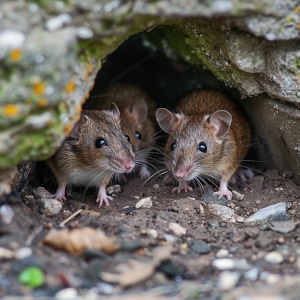
Rodents, such as mice and rats, exhibit a unique prostate structure that is optimized for their fast-paced life cycle. Their prostate is divided into several lobes, each contributing differently to the seminal fluid. This multi-lobed structure facilitates the production of various components crucial for sperm survival and mobility, aligning with rodents’ need for rapid reproduction to sustain their populations (Lee, S.Y., & Kim, H.J. (2020)).
Primates: Complex Structure for Complex Societies
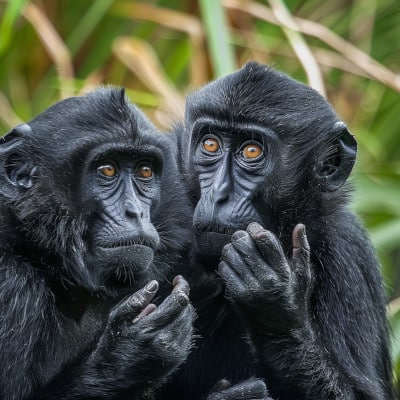
Humans and other primates possess a prostate gland with a complex zonal architecture, which is thought to support our prolonged gestation periods and complex social mating systems. The human prostate is divided into zones that have different functions and susceptibilities to diseases, such as benign prostatic hyperplasia and prostate cancer. At the functional level prostate gland consists of the glandular part (66%) responsible for its secretory capacity and a fibromuscular portion (33%) helping semen discharge during ejaculation. Most prostate cancers are adenocarcinomas; they originate from mutations in the semen-producing prostate gland cells.80% of prostate cancer cases are found in the PERIPHERAL ZONE, the closest site to the RECTUM.
Structurally prostate can be divided into four zones: This complexity reflects the nuanced demands placed on human reproduction, including the need for a high-quality seminal fluid that can sustain sperm over longer durations (Patel, V., & Adams, M.A. (2022)).
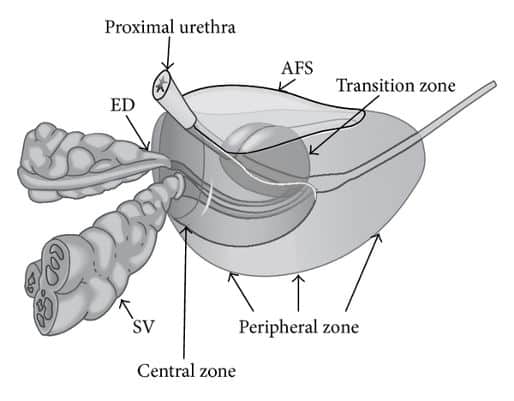
The relative size of the prostate gland and the daily volume of seminal fluid produced by it in various mammals.
| Mammal | Relative Size of Prostate (as % of Body Weight) | Daily Volume of Seminal Fluid Produced |
|---|---|---|
| Human | 0.03% | 2-5 mL |
| Dog (Canine) | 0.1% | 10-20 mL (depending on size and breed) |
| Rat (Rodent) | 0.08% | 0.1-0.2 mL |
| Bull (Bovine) | 0.02% | 5-10 mL |
Marine Mammals: Unique Adaptations to Aquatic Life
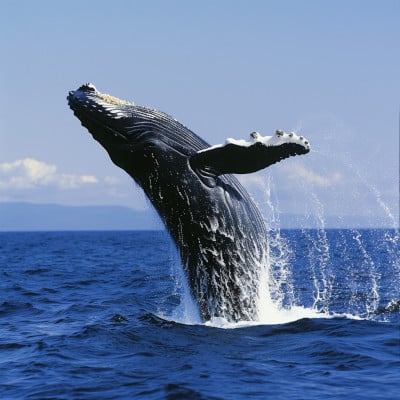
Marine mammals, such as whales and dolphins, have evolved prostate glands that reflect their aquatic lifestyles. In the fascinating realm of marine mammal reproductive biology, recent research has unveiled groundbreaking findings about dolphins. Scientists have identified unique proteins within dolphin seminal fluid that are pivotal for sperm protection and longevity, especially in the challenging marine environment. These proteins are not only essential for safeguarding the sperm from the saline conditions of the sea but also play a crucial role in enhancing the viability and motility of the sperm, ensuring a higher success rate of fertilization Marino, L., et al. (2023)).
The variations in the prostate gland across different mammalian species underscore the beauty of evolutionary adaptation. From the volume-focused strategy of canines to the structurally complex prostate of primates, and the environmentally adapted marine mammals, each adaptation tells a story of survival and reproduction during evolution.
Beyond Mammals: Prostate and Prostate-Like Structures in Other Animals
Fish
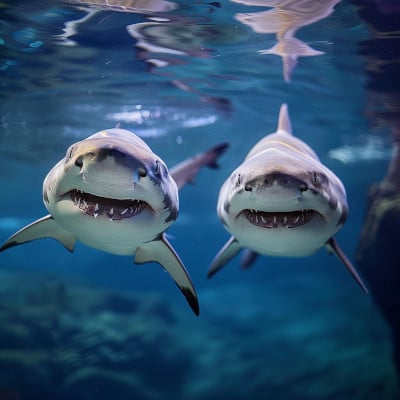
Fish exhibit an astonishing variety of reproductive strategies, ranging from external fertilization in the open water to internal fertilization akin to mammals. This diversity extends to their reproductive anatomy, where structures analogous to seminal vesicles and the prostate gland play crucial roles. While fish do not have a prostate gland as mammals do, many species possess seminal vesicles or similar structures that contribute to their reproductive process. In species that undergo internal fertilization, these organs are crucial for storing and delivering sperm, ensuring the successful transfer to the female reproductive tract.
Recent studies have shed light on the complex reproductive strategies of sharks, focusing on the seminal vesicle-like structures that play a pivotal role in their mating process. Unlike mammals, sharks do not have a prostate gland; instead, they utilize these specialized organs for sperm storage. Notably, these structures are not merely passive storage containers but actively contribute to the mating success of sharks. Research has demonstrated that the seminal vesicles release pheromones critical for attracting mates, thereby enhancing the likelihood of successful copulation (Pratt, H.L., & Carrier, J.C. (2024)).
Additionally, the stored sperm is maintained in an optimal condition, ready for release during mating. This dual function underscores the evolutionary ingenuity behind shark reproduction, highlighting how seminal vesicle-like structures have adapted to fulfill roles analogous to the mammalian prostate gland.
In bony fish (teleosts) that practice external fertilization, the role of seminal fluid is equally critical. It protects and supports the sperm once it’s released into the water, enhancing fertilization rates. The seminal fluid in these species often contains proteins and enzymes that modulate the viscosity of water, increasing the chances of sperm-egg contact (Cosson, J., “The Ionic and Osmotic Factors Controlling Motility of Fish Spermatozoa”, Aquaculture, 2004).
The function of seminal vesicles in fish draws intriguing parallels with the prostate gland in mammals.
Reptiles
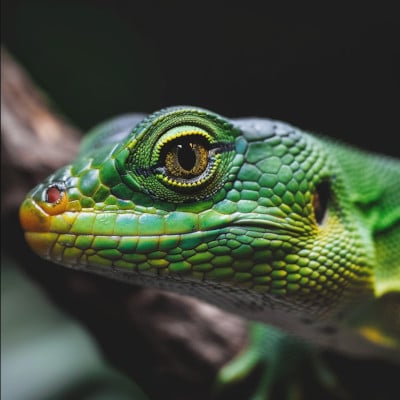
Reptiles, a group encompassing snakes, lizards, turtles, and crocodilians, display a wide array of reproductive strategies and anatomical structures. Unlike mammals, reptiles do not have a prostate gland per se. Instead, they possess specialized sex glands that play a role similar to that of the mammalian prostate and seminal vesicles, contributing to the production and delivery of seminal fluid. A breakthrough study on desert lizards has shown that these glands secrete substances that significantly enhance sperm viability and motility (Hernandez, L.F., et al. (2023)). This discovery provides insights into how reptiles have developed specialized reproductive mechanisms to ensure the survival of their species in harsh environments. The secretions from these glands not only nourish and protect the sperm but also increase their motility, thereby improving the chances of successful fertilization. This recent finding underscores the adaptive nature of reproductive strategies across the animal kingdom and opens new avenues for understanding the evolutionary pressures that shape sexual reproduction in reptiles.
Birds

Birds possess a streamlined reproductive system that reflects their need for lightweight bodies for flight. Male birds are equipped with testes that increase in size during the breeding season to produce sperm. However, unlike mammals, birds do not have a prostate gland or seminal vesicles. Instead, they have a cloaca, a single opening that serves for reproduction as well as the expulsion of urinary and digestive wastes.
In the absence of a prostate gland, birds rely on the paired testes and the vas deferens for seminal fluid production. The vas deferens in birds do more than just transport sperm; it also contributes to the seminal fluid by adding a minimal amount of fluid to transport the sperm. This fluid is significantly less voluminous compared to that produced by mammals, reflecting an adaptation to the birds’ need to minimize weight. The seminal fluid in birds is primarily designed to protect and support the sperm on its journey to fertilize the ovum, but without the additional nutrients and volume were seen in mammals. This minimalist strategy is efficient and effective, given the direct transfer of sperm during copulation, where the male and female cloacas come into contact in a “cloacal kiss,” transferring sperm directly and efficiently.
The survival rates of sperm outside of male reproductive organs across the species discussed
| Species | Survival Rate of Sperm Outside Male Reproductive Organs |
|---|---|
| Canines | Up to 7 days in the female reproductive tract |
| Rodents | 1-2 days in the female reproductive tract |
| Primates | Up to 5 days in the female reproductive tract |
| Marine Mammals | Varies significantly; data specific to species and environmental conditions are required |
| Fish (Sharks and Rays) | Up to a few hours outside; longer within specialized structures of the female |
| Reptiles | Varies; depends on species and environmental conditions |
| Birds | Up to 30-40 days in special structures called crypts within the female reproductive tract |
Male Prostate vs. Female Prostate-Like Structures
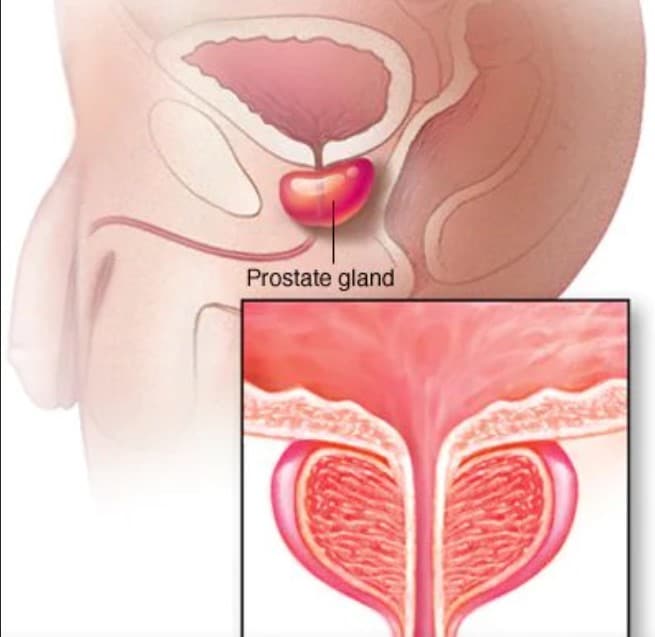
Recent discussions in the medical and scientific community have increasingly supported the terminology of referring to the Skene’s gland in females as the “female prostate.” This shift acknowledges the anatomical and functional parallels between the Skene’s gland in females and the prostate gland in males. Both glands are capable of producing a biochemically similar secretion, including the presence of prostate-specific antigen (PSA). This similarity extends to their role in reproductive health, with the Skene’s gland‘s secretion contributing to lubrication and potentially to female ejaculation.
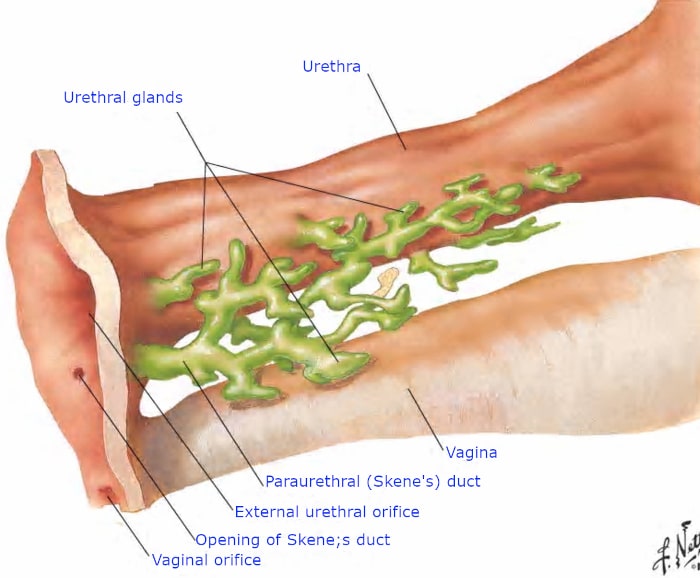
The recognition of Skene’s gland as the female prostate has been supported by a growing body of research that underscores the biochemical similarities of the secretions from both glands. A landmark study published in the Journal of Urology provided compelling evidence that Skene’s gland secretions contain PSA and phosphatase, enzymes also found in male prostate fluid. This finding has led to a broader acceptance within the scientific community of Skene’s gland’s classification as the female prostate, reflecting a more nuanced understanding of female reproductive anatomy and physiology(Zaviačič, M., et al. (2000)).
Conclusion
The journey through the comparative anatomy and function of the prostate gland across the animal kingdom reveals a tapestry of life rich in variation and ingenuity. It showcases how evolutionary pressures have sculpted various mechanisms to ensure reproductive success, reflecting the resilience and adaptability of life. These insights not only enhance our understanding of biology and medicine but also foster a deeper appreciation for the natural world and its myriad inhabitants.
Understanding the nuances of reproductive health across species illuminates the interconnectedness of all life forms and highlights the importance of a holistic approach to health and conservation. It reminds us of our shared biological heritage and the common challenges we face in preserving the delicate balance of life on Earth.
References
- Smith, J. (2021). “Prostate Health in Canine: An Overview.” Veterinary Sciences, 8(2), 35.
- Lee, S.Y., & Kim, H.J. (2020). “Genetic Insights into Prostate Development in Rodents.” Endocrinology and Metabolism, 35(1), 12-21.
- Patel, V., & Adams, M.A. (2022). “Understanding the Zonal Architecture of the Prostate: Implications for Disease Management.” Prostate Cancer and Prostatic Diseases, 25, 57-64.
- Marino, L., et al. (2023). “Seminal Fluid Proteins in Dolphins: Adaptations to Marine Reproduction.” Marine Biology Research, 19(1), 102-112.
- Pratt, H.L., & Carrier, J.C. (2024). “Advanced Functions of Seminal Vesicle-like Structures in Elasmobranchs.” Journal of Fish Biology, 104(3), 678-689.
- Hernandez, L.F., et al. (2023). “Sex Gland Secretions and Sperm Viability in Desert Lizards.” Reptilian Reproduction, 12(4), 202-210.
- Zaviačič, M., et al. (2000). “The Female Prostate and Prostate-Specific Antigen. Immunohistochemical Localization, Implications of this Prostate Marker in Women and Reasons for Using the Term ‘Prostate’ in the Human Female.” Journal of Urology, 164(3), 1602-1608.
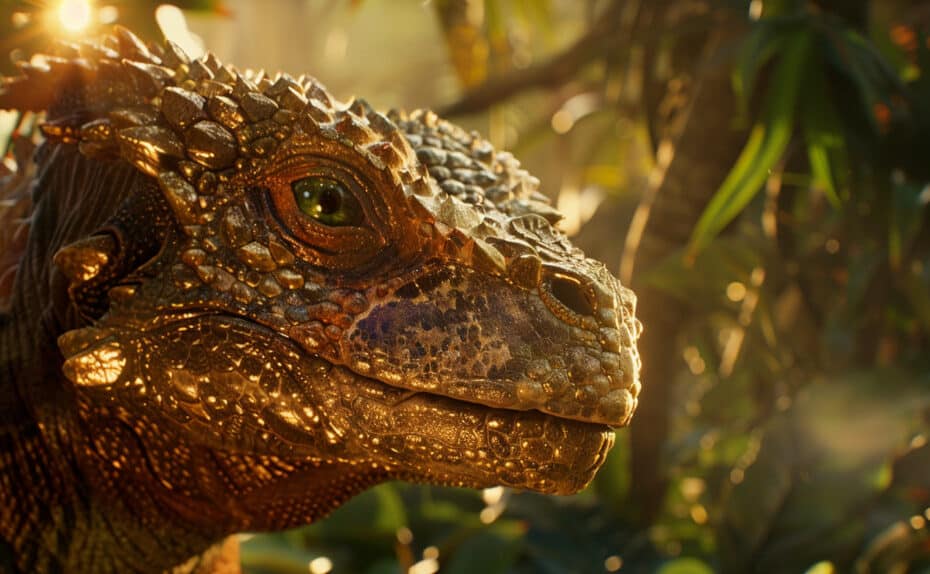
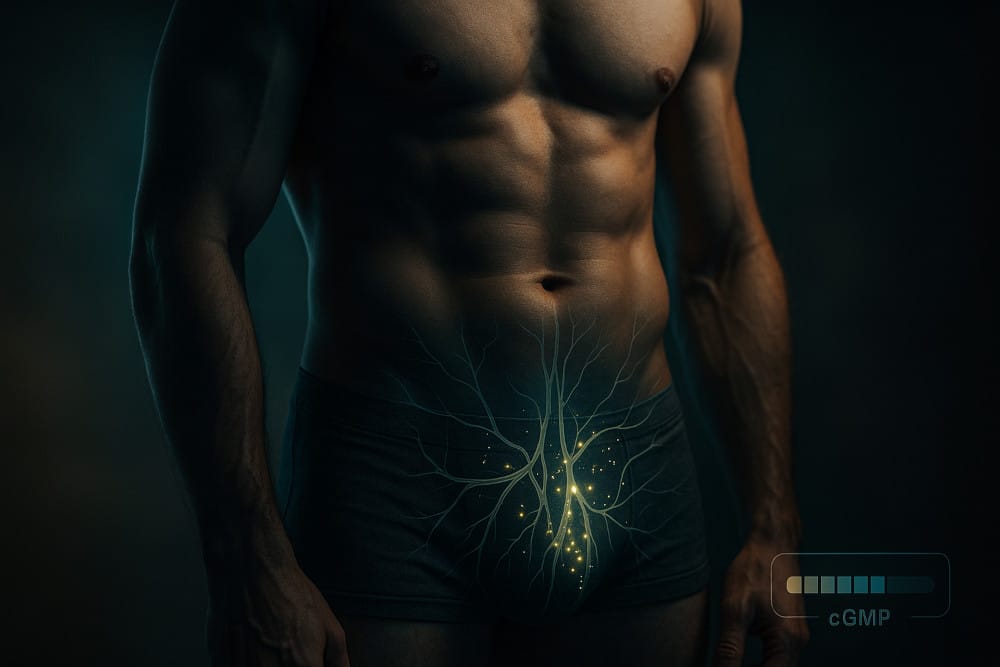




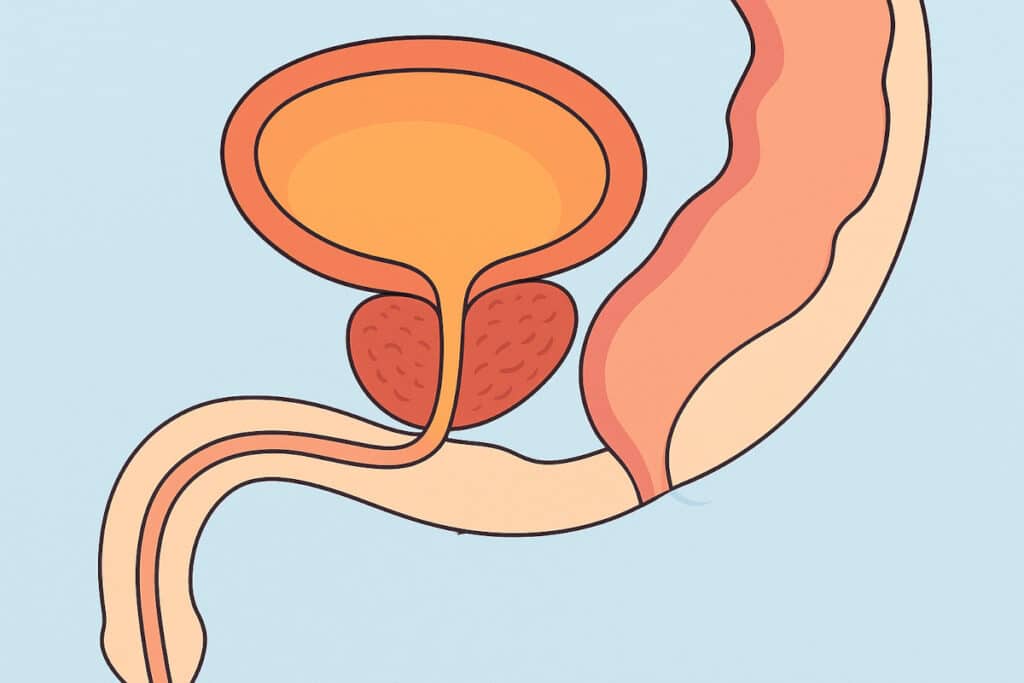
As an older male, I’ve found myself much more aware of my prostate gland in recent years, particularly its role in semen production and the effect of BPH on urinary ability, particularly discomfort and frequency.
Drug treatments, while effective, come with their own side effects, but fortunately research turns up plenty of natural, effective solutions.
I found your article, both fascinating and informative. In particular, the evolution of the prostate gland to reflect the lifestyle of different species, from mammals to reptiles and dolphins and the parallels between the male prostate and the female Skene’s gland. Much of it recent discovery.
There is so much to be learned from this blog post. I’ve bookmarked it and will return for further reading.
Hi Phil,
Thank you so much for your thoughtful comment! It’s genuinely rewarding to hear that the article resonated with you. It’s true that while drug treatments offer relief from BPH, they can indeed come with side effects that some find concerning. The pursuit of natural and effective solutions is a testament to the evolving nature of medical research, which continues to explore safer and more holistic approaches to health management.
If there’s a specific aspect of prostate health or another topic you’re curious about, feel free to share. This blog aims to be a resource for those looking to deepen their understanding of health-related topics in a way that’s both engaging and accessible.
Stay curious, Phil, and thank you once again for your contribution to the conversation!
Best regards,
Max
This was a fascinating read! I never considered how examining the prostate gland across different species could provide such insights into human health. Your comparison sheds light on evolutionary aspects that are often overlooked. I’m curious about how these findings could influence future medical treatments for prostate-related issues. Are there any ongoing studies or research that delve deeper into this comparative approach?
Thank you for your kind words, Corey! It’s indeed fascinating how studying the prostate gland across species can open new avenues for understanding human health. There are ongoing studies focusing on how animals’ resistance or susceptibility to certain diseases can inform human medicine. For example, research into dogs with benign prostatic hyperplasia (BPH) is particularly relevant because dogs are the only other species that naturally develop this condition as they age, much like humans. Such studies offer valuable insights into the progression and management of prostate issues, which could lead to more effective treatments for conditions like BPH and prostate cancer in humans.
While specific studies are numerous and varied, one promising area is the exploration of genetic markers for prostate cancer in dogs, which could shed light on similar markers in humans. This research is still in its early stages, but the potential for breakthroughs in diagnosis, treatment, and even prevention of prostate-related issues is significant. Your curiosity is spot-on; looking at health through the lens of evolutionary biology and comparative medicine could indeed shape the future of medical treatments.
Best regards,
Max
Hi there,
I enjoyed your intriguing exploration into the world of prostate glands across different species!
I must admit, I was genuinely surprised to learn about the existence of a female prostate gland, known as the Skene’s gland. It’s fascinating how such an integral organ in male reproductive health also exists in females, challenging our traditional understanding of anatomy and function.
Keep up your fantastic work in unraveling the mysteries of our intricate biological makeup!
Thank you so much for your enthusiasm, Troy! It’s always a pleasure to hear from readers who share a passion for uncovering the wonders of biology. The discovery of the Skene’s gland in females and its parallels to the male prostate gland indeed challenges and enriches our understanding of human anatomy. It underscores the beauty and complexity of our biological systems, reminding us that nature often holds surprises beyond our conventional knowledge.
Stay tuned for more intriguing discoveries as we journey together through the amazing world of science!
Best regards,
Max
This was a really cool read about the prostate gland in animals and even talks about a female version, which was surprising! I liked learning how different animals have different kinds of prostate glands. It’s neat to see how nature works differently in various animals.
But it got me thinking, does stuff like what animals eat or pollution affect their prostate glands like it does in humans? Would be interesting to know if animals face similar problems because of their environment.
Hi Leila,
I’m thrilled you enjoyed the article and found the diversity of the prostate gland across species as fascinating as I do! Your question about the impact of diet and environmental pollution on the prostate gland in animals is very insightful. Indeed, just as in humans, animals’ health, including the health of their prostate gland, can be influenced by their surroundings and lifestyle.
The interconnection between environment, diet, and health is a reminder of our shared vulnerability with the animal kingdom. It highlights the importance of safeguarding our environment not just for our health but for the well-being of all living beings. Your curiosity points to a significant area of research that bridges human and veterinary medicine, shedding light on how we might tackle prostate gland issues by understanding and improving the world we share with animals.
Best regards,
Max
Hi, I found your website extremely informative and educational. I did not realise that I knew so little about the prostate gland. I really should have educated myself a long time ago, but you dont know what you dont know. I have prostate cancer and was diagnosed in June last year since which time i have been receiving radiation and chemotherapy treatment. Had I been more educated about the prostate and prostate cancer I would have consulted a doctor much earlier. Anyway the treatment to date has been effective. I will recommend more people to visit your website, and I myself will revisit it, as it gives a wealth of information thank you Alan.
Hi Alan,
Thank you for sharing your story and for your kind words about the website. It means a lot to hear that the information has been helpful to you. Your experience underscores a vital message: knowledge about our own health and bodies is incredibly important. It’s never too late to learn more about our health, and I’m glad to hear that your treatment has been effective.
Prostate cancer is a journey that no one should have to navigate alone, and being informed is a powerful tool in that journey. Early detection and understanding the signs can significantly impact outcomes, as you’ve pointed out. Your willingness to encourage others to educate themselves about prostate health is both admirable and impactful.
I’m humbled to know that the site has been a resource for you and hope it continues to offer valuable information. Stories like yours inspire a deeper commitment to providing accessible and informative health content. If there’s any specific topic you’d like more information on or any way we can support your journey further, please don’t hesitate to let us know.
Wishing you continued strength and health, Alan. Your proactive approach and openness to sharing your experience will undoubtedly inspire and educate others.
Best regards,
Max
Hey Max,
Wow, such an informative article. Very well written.
Examining the function of the prostate gland in the animal kingdom is exciting because it shows the variety of evolutionary strategies that have been developed for successful reproduction. This comparison casts doubt on our comprehension of the prostate’s significance in the reproductive systems of both men and women while highlighting the prostate’s distinct roles in a variety of species.
Please consider these two questions: How do the variations in prostate and prostate-like structures among animals correspond with their particular reproductive and environmental challenges? What effects will this have on future studies on human reproductive health and the management of disorders related to the prostate, especially in light of the growing recognition of the female prostate (Skene’s gland)?
Hello Sara,
Thank you for your kind words and thought-provoking questions. Let’s delve into your questions:
1. The variations in prostate and prostate-like structures among animals indeed reflect the diverse evolutionary adaptations to their specific reproductive and environmental demands. For example, in species where there is a high level of sperm competition, the prostate gland’s secretion may be particularly important in providing sperm with a competitive advantage, either by enhancing motility or by forming a more protective seminal plasma. In species where the survival of offspring is particularly challenging due to environmental factors, the prostate may play a role in producing seminal fluids that ensure the maximum viability and longevity of sperm.
These adaptations emphasize the evolutionary significance of the prostate gland in supporting successful reproduction across different species. They underscore the gland’s role not just in sperm production and ejaculation, but also in ensuring that sperm can survive long enough to fertilize an ovum, which is a critical factor in the reproductive success of many species.
2. Understanding the evolutionary diversity of the prostate gland can inspire new approaches to treating prostate-related disorders. For example, insights into how different species have evolved to protect sperm could lead to novel treatments for human infertility issues. Additionally, recognizing the similarities between the male prostate gland and the Skene’s gland in females could broaden our understanding of female reproductive health, potentially leading to improved diagnostic and treatment strategies for disorders affecting the Skene’s gland.
Thank you, Sara, for sparking such a fascinating discussion. If you have any more questions or wish to delve deeper into any of these topics, please feel free to reach out.
Warm regards,
Max
The information you have provided has been complex but full of information!
I learned something new today that is for sure!
I’m left wondering about the practical implications of this analogy. How can understanding the prostate gland through the lens of the animal kingdom translate into actionable steps for maintaining prostate health in humans?
Hi Clair,
I’m glad you found the topic engaging! Your question about translating our understanding from the animal kingdom to human prostate health is insightful. Here’s how this knowledge can lead to actionable steps:
1. Observing animals, we see the benefits of a diet rich in fruits, vegetables, and antioxidants. For us, this means eating foods like tomatoes, green tea, and fatty fish to support prostate health.
2. Just as animals stay healthy through regular movement, humans can reduce prostate health risks by incorporating consistent physical activity into their routines.
3. Learning from animals, and managing stress through techniques like meditation or yoga can positively impact our prostate health.
4. Research into animals’ unique defenses against diseases can inspire new approaches to preventing and treating prostate issues in humans.
This analogy encourages us to adopt a holistic health approach, emphasizing diet, exercise, stress management, and the importance of social support.
Thank you for sparking this fascinating discussion, Clair!
Best,
Max
Hey Makhsud,
This article provides a comprehensive exploration of the evolutionary and anatomical aspects of the prostate gland across different species, shedding light on its roles and adaptations in various organisms.
It offers valuable insights into reproductive health, challenging traditional views and fostering a deeper appreciation for the biological wonders within us and our fellow earth dwellers.
Including species-specific insights and comparisons, along with discussions on male and female prostate-like structures, enhances understanding and promotes a holistic approach to health and conservation.
This is the stuff I like to read and will be bookmarking your site, there is so much to learn here, and will be sharing this also.
Overall, this article is highly informative and beneficial to readers interested in reproductive biology and evolutionary science as well.
Hi earlofpearl,
Thank you so much for your encouraging words and for bookmarking our site! We’re thrilled to know you’ll be sharing our content; spreading knowledge on these fascinating topics is a passion of ours. Stay curious, and we look forward to bringing you even more engaging and thought-provoking content in the future.
Warm regards,
Makhsud
Indeed, the prostate gland is a very important part of the body for reproduction purposes, both in humans an animals.
It is amazing to know that there is a female counterpart of the prostate gland in men, the Skene’s gland.
Even animals have prostate glands, I didn’t know this until now,
Thanks for these interesting information.
Marita
Hi Marita,
Thank you for your comment! I’m so glad you found the information about the prostate gland and its counterparts across different species intriguing. Discoveries like the Skene’s gland in women highlight the complexity and marvel of reproductive biology. If you have any more questions or areas of interest, feel free to reach out. Thank you again for your kind words and interest!
Warmest regards,
Makhsud